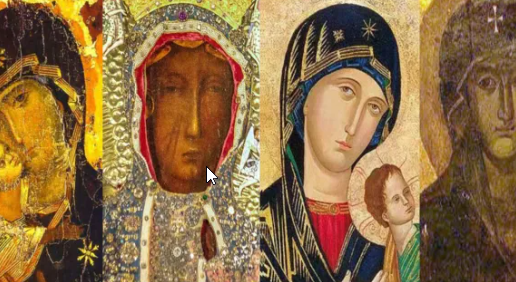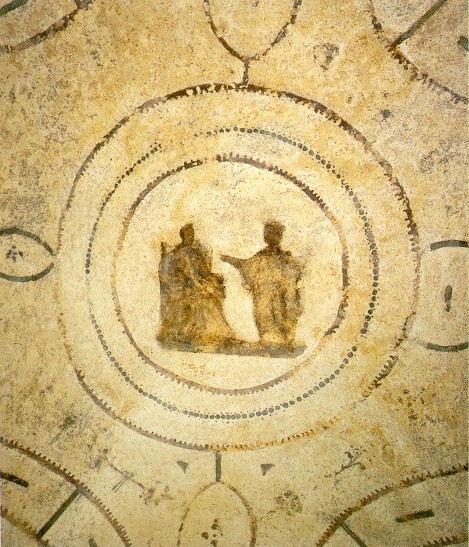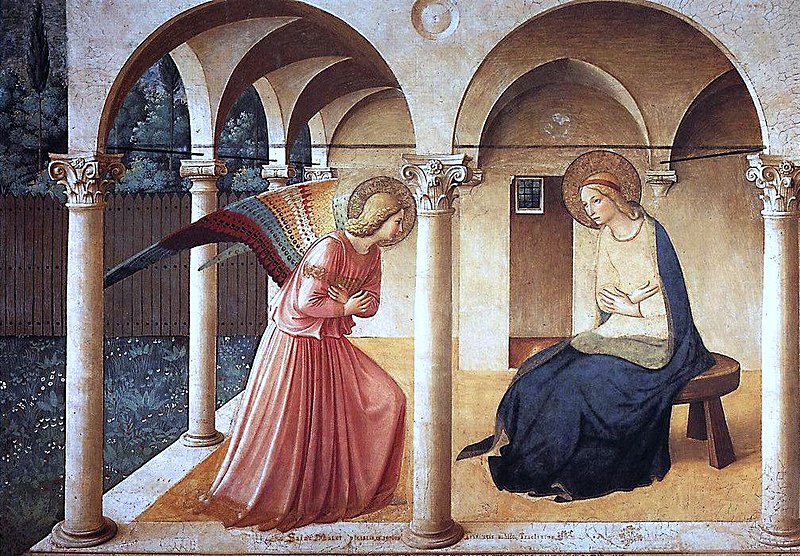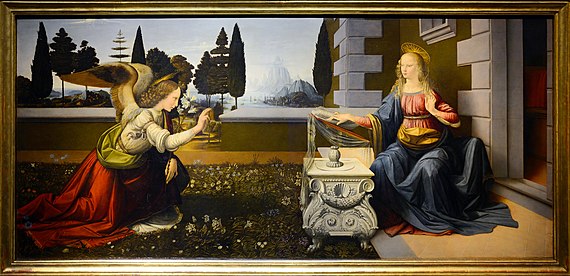“Behold, I am the handmaid of the Lord; ..."
Luke 1:38
Since March 25 is the Monday of Holy Week, the Solemnity of the Annunciation of the Lord is transferred to Monday, April 8 this year – 2024.
The Annunciation of the Lord refers to the time when the angel Gabriel visited the Blessed Virgin Mary to tell her that she would be the mother of the savior.
Luke 1: 26-38
Annunciation Novena
This Novena for the feast of the Annunciation is traditionally prayed from starting on March 16th but you can pray it any time.
This feast is commemorating when the angel of the Lord appeared to Mary and told her that she would conceive Jesus. It’s 9 months before Christmas.
Annunciation Novena – Pray Day 1 – 9
In the name of the Father, and of the Son, and of the Holy Spirit.
Amen.
O most holy Virgin Mary, to whom God sent the Angel Gabriel to announce that you should be the mother of His Only-Begotten Son,
pray for us who have recourse to you. Holy, lovely Mary We give our all to you What is past and present, And the future, too. Blessed be the holy and Immaculate Conception of the most blessed Virgin Mary, Mother of God.
(State your intentions here…)
Remember, O most gracious Virgin Mary, that never was it known that anyone who fled to thy protection, implored thy help, or sought thy intercession was left unaided.
Inspired by this confidence, I fly unto thee, O Virgin of Virgins, my Mother; to thee do I come, before thee I stand, sinful and sorrowful. O Mother of the Word Incarnate, despise not my petitions, but in thy mercy hear and answer me.
Amen.
In the name of the Father, and of the Son, and of the Holy Spirit.
Amen.
Artwork depicting the Annunciation
Artwork depicting the Annunciation is perhaps as old as the event itself.
 Luke himself was an artist, and believed by many to be the first person to create an icon of Mary. There are four icons of Mary attributed to St. Luke.
Luke himself was an artist, and believed by many to be the first person to create an icon of Mary. There are four icons of Mary attributed to St. Luke.
Scholars believe that pictorial representations of the Annunciation date back perhaps to the third century A.D.
 Many scholars point to the Catacombs of Priscilla in Rome as playing host to the first artistic representation of the Annunciation.
Many scholars point to the Catacombs of Priscilla in Rome as playing host to the first artistic representation of the Annunciation.
In the centuries that followed, the Annunciation remained a popular subject of art.
“The Annunciation is among the most consistently depicted subjects in medieval iconography; it is found in everything from early Christian catacombs and sculpted facades to books of hours, mosaics, and panel paintings,” said Pamela Patton of the Art and Archaeology Department at the University of Princeton.
The Annunciation, late 2nd century, Rome
Annunciation (Fra Angelico, San Marco)
 The Annunciation (c. 1440–1445) is an Early Renaissance fresco by Fra Angelico in the Convent of San Marco in Florence, Italy. When Cosimo de’ Medici rebuilt the convent, he commissioned Fra Angelico to decorate the walls with intricate frescos. This included the altarpiece, the inside of the monk’s cells, the friar’s cloister, the chapter house, and inside the corridors; around fifty pieces in total. All of the paintings were done by Angelico himself or under his direct supervision. Out of all of the frescos at the convent, the Annunciation is the most well known in the art world.
The Annunciation (c. 1440–1445) is an Early Renaissance fresco by Fra Angelico in the Convent of San Marco in Florence, Italy. When Cosimo de’ Medici rebuilt the convent, he commissioned Fra Angelico to decorate the walls with intricate frescos. This included the altarpiece, the inside of the monk’s cells, the friar’s cloister, the chapter house, and inside the corridors; around fifty pieces in total. All of the paintings were done by Angelico himself or under his direct supervision. Out of all of the frescos at the convent, the Annunciation is the most well known in the art world.
Annunciation (Leonardo)
 The Annunciation is a painting widely attributed to the Italian Renaissance artist Leonardo da Vinci, dated to c. 1472–1476. Leonardo’s earliest extant major work, it was completed in Florence while he was an apprentice in the studio of Andrea del Verrocchio. The painting was made using oil and tempera on a large poplar panel and depicts the Annunciation, a popular biblical subject in 15th-century Florence. Since 1867 it has been housed in the Uffizi in Florence, the city where it was created. Though the work has been criticized for inaccuracies in its composition, it is among the best-known portrayals of the Annunciation in Christian art.
The Annunciation is a painting widely attributed to the Italian Renaissance artist Leonardo da Vinci, dated to c. 1472–1476. Leonardo’s earliest extant major work, it was completed in Florence while he was an apprentice in the studio of Andrea del Verrocchio. The painting was made using oil and tempera on a large poplar panel and depicts the Annunciation, a popular biblical subject in 15th-century Florence. Since 1867 it has been housed in the Uffizi in Florence, the city where it was created. Though the work has been criticized for inaccuracies in its composition, it is among the best-known portrayals of the Annunciation in Christian art.